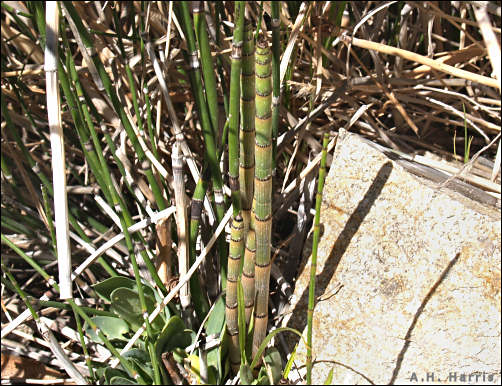

It only seems rational that horsetails should be attached to horses, but in moist habitats through much of world, including our Chihuahuan Desert, horsetails grow very nicely without the horses. Of course the plant lovers among you know that these horsetails are members of the genus Equisetum and are also known by such common names as Mare's Tail and Scouring Rush.
Why Scouring Rush? Because before steel wool, these plants often were used to scour pots and pans. Like many plants, though better at it than most, horsetails take silica from the soil and accumulate it in the stems. Now, silica is the stuff that sand often is made of. Dry the horsetail stems and in essence you have a fine sandpaper suitable not only for kitchenware, but for polishing other metal objects.
Used from ancient times in medicine, it seems to be a favorite with advocates of alternative medicine. Skeptics have always advocated checking out a horse's teeth before buying; perhaps in this case, one should likewise first check out the horse's tail.
Listen to the audio.

Contributor: Arthur H. Harris, Laboratory for Environmental Biology, Centennial Museum, University of Texas at El Paso.
Desert Diary is a production of KTEP, National Public Radio for the Southwest at the University of Texas at El Paso.

Horsetails (Equisetum) in early spring, Chihuahuan Desert Gardens. Photograph by A.H. Harris.